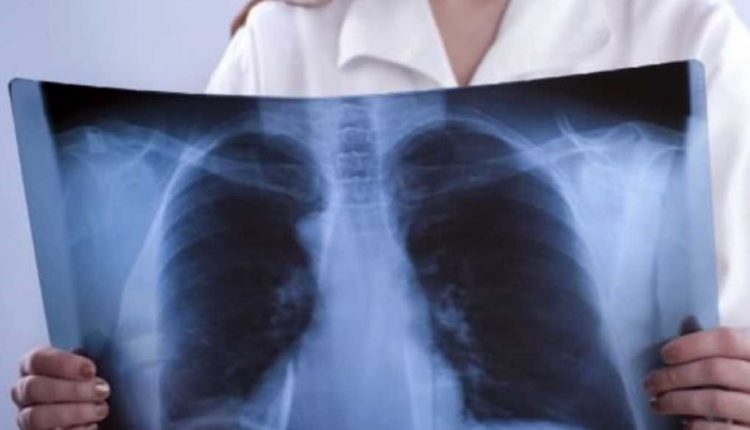
Berilliosis (beryllium poisoning): causes, symptoms, diagnosis and treatment
Berylliosis is a type of pneumoconiosis, i.e. a lung disease caused by inhalation of dust, e.g. at work, and in fact berylliosis is a typical occupational respiratory disease
It is a systemic granulomatous disease with pulmonary manifestations, caused by inhalation of dust or fumes containing beryllium compounds or products.
It is also called beryllium disease, beryllium poisoning or beryllium granulomatosis.
Causes of beryllium disease
Exposure to beryllium used to be common in many industries, including beryllium mining, electronics industries, chemical plants and fluorescent lamp factories.
Today, its main use is in the aerospace industry.
Berylliosis differs from most other pneumoconioses: it appears to be a hypersensitivity disease and occurs in only about 2% of exposed individuals.
Symptoms may occur acutely or may not appear until 10-20 years after exposure, which may have been brief.
Pathological anatomy and pathophysiology
Acute berylliosis is a chemical pneumonitis, but may also affect other organs (e.g. skin and conjunctiva).
The anatomo-pathological changes in the lung are represented by diffuse inflammatory infiltrates in the parenchyma and non-specific intraalveolar oedema.
The anatomo-pathological feature of chronic berylliosis is a diffuse granulomatous reaction of the lungs and hilar lymph nodes, which is histologically indistinguishable from sarcoidosis.
Early formation of a granuloma with mononuclear cells and giant cells can also be observed.
Symptoms, signs and diagnosis of berylliosis
Patients with acute berylliosis often present with dyspnoea, coughing, weight loss and highly variable x-ray pictures, which usually demonstrate diffuse alveolar thickening.
This disease is extremely rare in North America.
Patients with chronic forms complain of insidious and progressive exertional dyspnoea, cough, chest pain, weight loss and asthenia.
Symptoms may not manifest themselves until 20 years after exposure has ceased.
Chest X-ray shows signs of diffuse infiltration, often with hilar adenopathy, reminiscent of the sarcoidosis picture.
Pictures of milar diffusion are also observed.
Diagnosis is based on anamnestic data of exposure and typical clinical manifestations.
However, unless special immunological techniques are used, it is often impossible to differentiate berylliosis from sarcoidosis.
Prognosis, prophylaxis and therapy for berylliosis
The acute form can be fatal, but patients who survive have an excellent prognosis.
Clinical manifestations in those who survive are usually short-lived and completely reversible.
The chronic form often results in a progressive reduction in respiratory function.
It can lead to right ventricular overload, with death from pulmonary heart disease.
The elimination of industrial dust forms the basis of beryllium exposure prevention, but its effectiveness is not absolute.
The disease (both acute and chronic) must be recognised promptly and affected workers must be removed from further exposure to beryllium.
Treatment of acute beryliosis is generally symptomatic.
The lungs often become oedematous and haemorrhagic and mechanical ventilation is necessary in severely affected patients.
In symptomatic patients with pulmonary function abnormalities, prednisone 60 mg/day PO or the EV equivalent should be administered for a period of 2-3 weeks, with scaling down of the dosage in the following 3-4 weeks to 10-15 mg/day.
Although corticosteroids have been used in chronic berylliosis, the response is usually unsatisfactory.
A marked, prolonged improvement probably indicates that the patient is suffering from sarcoidosis rather than berylliosis.
Other occupational respiratory diseases
Other frequent occupational respiratory diseases that might interest you are:
- silicosis;
- coal workers’ pneumoconiosis;
- asbestosis and related diseases (mesothelioma and pleural effusion);
- hypersensitivity pneumonias;
- occupational asthma;
- byssinosis;
- diseases caused by irritant gases and other chemicals;
- sick building syndrome.
Read Also
Emergency Live Even More…Live: Download The New Free App Of Your Newspaper For IOS And Android
Bronchial Asthma: Symptoms And Treatment
Bronchitis: Symptoms And Treatment
Bronchiolitis: Symptoms, Diagnosis, Treatment
Extrinsic, Intrinsic, Occupational, Stable Bronchial Asthma: Causes, Symptoms, Treatment
Chest Pain In Children: How To Assess It, What Causes It
Bronchoscopy: Ambu Set New Standards For Single-Use Endoscope
What Is Chronic Obstructive Pulmonary Disease (COPD)?
Respiratory Syncytial Virus (RSV): How We Protect Our Children
Respiratory Syncytial Virus (RSV), 5 Tips For Parents
Infants’ Syncytial Virus, Italian Paediatricians: ‘Gone With Covid, But It Will Come Back’
Respiratory Syncytial Virus: A Potential Role For Ibuprofen In Older Adults’ Immunity To RSV
Neonatal Respiratory Distress: Factors To Take Into Account
Stress And Distress During Pregnancy: How To Protect Both Mother And Child
Respiratory Distress: What Are The Signs Of Respiratory Distress In Newborns?
Respiratory Distress Syndrome (ARDS): Therapy, Mechanical Ventilation, Monitoring
Bronchiolitis: Symptoms, Diagnosis, Treatment
Chest Pain In Children: How To Assess It, What Causes It
Bronchoscopy: Ambu Set New Standards For Single-Use Endoscope
Bronchiolitis In Paediatric Age: The Respiratory Syncytial Virus (VRS)
Pulmonary Emphysema: Causes, Symptoms, Diagnosis, Tests, Treatment
Bronchiolitis In Infants: Symptoms
Fluids And Electrolytes, Acid-Base Balance: An Overview
Ventilatory Failure (Hypercapnia): Causes, Symptoms, Diagnosis, Treatment
What Is Hypercapnia And How Does It Affect Patient Intervention?
Symptoms Of Asthma Attack And First Aid To Sufferers
Occupational Asthma: Causes, Symptoms, Diagnosis And Treatment



